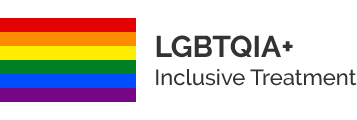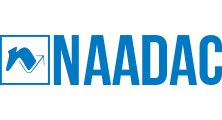Painkiller addiction can often times be hidden in plain sight, making it difficult to identify. Understanding and recognizing the signs, symptoms, risks and more is the first step in the recovery journey.
Understanding Painkiller Addiction
Learn about prescription painkiller addiction
It should be made clear that absolutely no one decides to become addicted to prescription painkillers. No one swallows their first OxyContin and thinks about how they’re now going to alienate their loved ones, lose their job, or become involved on the wrong side of law enforcement. However, while the abuse of illegal street drugs is on the decline in the United States, the abuse of prescription painkillers in on the rise.
Like all commonly abused drugs, opiate narcotics – prescription painkillers – are known to stimulate areas of the brain that are associated with pleasurable feelings. Usage of opiate painkillers creates, alongside analgesia, feelings of happiness and the sensation that all is right with the world. These feelings are similarly stimulated by eating food, drinking water, caring for children, and having sex, all activities necessary for sustaining life. As such, these activities, like prescription painkillers, stimulate the reward system of the brain and release a flood of a neurotransmitter called dopamine.
Many individuals who abuse prescription painkillers such as Vicodin or OxyContin believe that as the medication was prescribed by a physician, these drugs are safe. This could not be farther from the truth. At the dosage and frequency prescribed, prescription painkillers are fairly safe. However, if these drugs are used in a manner not intended by a physician or by someone who the drug is not prescribed for, prescription painkillers can be as dangerous as street drugs.
Often, people who begin to abuse prescription painkillers mix them with other substances to increase the desired high. Some combine prescription painkillers with other downers such as alcohol or benzodiazepines to increase the pleasurable and carefree feelings. The combination of these drugs can cause respiratory depression, which can lead to respiratory arrest and death. Others combine prescription painkillers with stimulants such as cocaine and meth in order to reduce the more unpleasant side effects of stimulant abuse. The combination of uppers and downers can lead to cardiovascular collapse and death.
Statistics
Painkiller addiction statistics
Prescription painkiller abuse is on the rise in the United States. In 2007, 2.5 million people in the United States tried abusing prescription painkillers for the first time. That same year, 2.1 million used marijuana for the first time. In 2007, the non-medical use of prescription painkillers rose to 12%, with one in every ten high school students admitting to using prescription painkillers for non-medical purposes. Frighteningly, individuals in the US who abuse prescription painkillers are 19 times more likely than others in the same age bracket to begin abusing heroin.
Causes and Risk Factors
Causes and risk factors for painkiller addiction
No one walks into the doctor presenting with pain issues with the express intent to become an addict – in fact, most people who go to the doctor for pain issues are aiming to do one thing: reduce the pain they’re experiencing. Even if an individual is experimenting with the feelings associated with prescription painkillers, they rarely have the intention of reaching full-blown addiction.
There has not been one single identifiable cause for the development of addiction in an individual. It’s generally believed that individuals develop an addiction based upon a number of factors. Common causes of prescription painkiller abuse may include the following:
Genetic: It’s been long understood that addiction has a genetic component. Individuals who have first-degree relatives who struggle with addiction are more prone to develop an addiction later in life.
Brain Chemistry: As prescription painkillers stimulate the rewards system of the brain by releasing the neurotransmitter dopamine, it’s been postulated that some individuals have inborn deficiencies in dopamine levels. These individuals may use food, drugs, or prescription painkillers in order to correct these inborn deficiencies.
Environmental: Individuals who are born into chaotic home environments in which drug use is prevalent are more likely to develop an addiction later in life. Additionally, those who begin to abuse drugs at a younger age are more likely to develop an addiction to serious drugs later in life.
Psychological: Prescription painkillers work to reduce pain and boost feelings of happiness. Individuals who are experiencing low moods from an untreated or undiagnosed co-occurring mental disorder, such as depression or bipolar disorder, are at greater risk for developing a dependence upon prescription painkillers.
Signs and Symptoms
Signs and symptoms of prescription painkiller addiction
The symptoms of prescription painkiller abuse will vary among individuals based upon genetic makeup, length of the addiction, and frequency of abuse. There are some common symptoms that are seen in most who abuse prescription painkillers. These include:
Mood symptoms:
- Mood swings
- Euphoria
Behavioral symptoms:
- Lying
- Social isolation
- Stealing to obtain more painkillers
- Visiting multiple doctors in order to obtain additional prescriptions
Physical symptoms:
- Constipation
- Nausea and vomiting
- Pinpoint pupils
- Sedation
- Slurred speech
- Itchy, flushed skin
- Increased risks for heart attack and other cardiovascular complications
- Respiratory depression
- Tolerance
- Seizures
- Coma
- Death
Psychological symptoms:
- Depression
- Anxiety
- Worsening mood states
- Psychosis
Effects
Effects of painkiller addiction
The effects of prescription painkiller abuse and addiction can lead to devastating consequences for those who abuse them. Prescription drug abuse can leave virtually no area of an addict’s life unscathed. Effects will range from mild to severe depending upon individual genetic makeup, frequency of use, length of abuse, and other factors. Most common effects of prescription painkiller abuse include:
- Social isolation
- Financial ruin
- Inability to quit using prescription painkillers despite multiple attempts to cut down or stop using
- Joblessness
- Crumbling interpersonal relationships
- Legal problems
- Incarceration
- Homelessness
- Consequences of risky behaviors
- Increasing physical consequences of prescription painkiller abuse
- Seizures
- Overdose
- Suicidal thoughts
- Death
Withdrawal Effects
Withdrawal effects of painkiller addiction
Withdrawal is a phenomenon that occurs when an individual has become physically dependent upon prescription painkillers. When the painkillers are abruptly discontinued or cut way down, people who are physically dependent upon these drugs will experience unpleasant withdrawal symptoms. Due to the dangerous effects of withdrawal, it’s advised that individuals attempting to detox from prescription painkillers do so under the skilled care of a rehab facility so that they can be medically monitored for safety. The most common withdrawal symptoms for prescription drug addiction can include:
- Restlessness
- Irritability
- Drug craving
- Increased respirations
- Enlarged pupils
- Loss of appetite
- Tremors and shaking
- Sweating
- Insomnia
- Muscle and bone pain
- Nausea and vomiting
- Diarrhea
- Involuntary leg movements (“kicking the habit”)
- Cold flashes with goose bumps (“cold turkey”)
Co-Occurring Disorders
Prescription painkiller addiction and co-occurring disorders
Many people who develop an addiction to prescription painkillers are also struggling with co-occurring mental illnesses. These co-occurring disorders may include the following:
- Depression
- Anxiety disorders
- Bipolar disorder
- Other drug abuse
- Alcoholism








